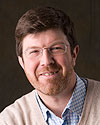Giving back to the community
 |
|
Giorgio Apollinari
|
Giorgio Apollinari, head of the Technical Division, wrote this week's column.
Our director has made clear several times that the future of our laboratory hinges on the consensus we can build and obtain within the worldwide high-energy physics community. This is because no laboratory (or any other societal form, for that matter) is an island in itself.
Today I wish to report about interactions we have established with science communities beyond our HEP world, communities for which the technology know-how developed at Fermilab represents a huge asset to achieve ambitious scientific goals.
First and foremost, Fermilab is interacting with the worldwide fusion energy community on the construction of ITER, a demonstration reactor in Cadarache, France. The US is involved through a US-ITER collaboration, which contributes to the project through the construction of Niobium Tin (Nb3Sn) magnets. The work done at Fermilab for the LHC Accelerator Research Program includes magnets that achieve fields of 11 Tesla. This work makes for a well-established technology springboard. We began working with US-ITER on the design and cryogenic integration of the Central Solenoid, the electromagnet at the center of ITER's fusion device that allows the device to achieve the highest current of stored magnetic energy possible. We hope to contribute to the testing of these important ITER elements in the US, possibly at Fermilab.
Additionally, the specific magnet expertise developed at Fermilab will be invaluable in providing the National Spherical Torus Experiment (NSTX) at Princeton Plasma Physics Laboratory (another fusion facility) and the nuclear physics CLAS12 experiment at Jefferson Lab a smoother path to completion of their respective magnet projects.
Last, but not least, the capability and infrastructure developed and matured at Fermilab in the last five years for the construction of superconducting radio frequency cryomodules is particularly interesting to the light source community. Light sources are accelerator-based sources of exceptionally intense, tightly focused beams of X-rays and ultraviolet radiation used for basic and applied research in fields from physics to biology to technology. The community planning for the Next Generation Light Source is interested in Fermilab's progress on SRF cryomodules for the acceleration of electrons. There are strong synergies here with our plans for the proposed Project X.
It is worth contributing a fraction of our resources to the wider science community. Doing so will build an even stronger and more diverse future for the laboratory.
|